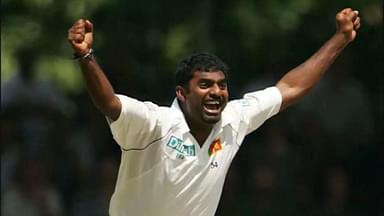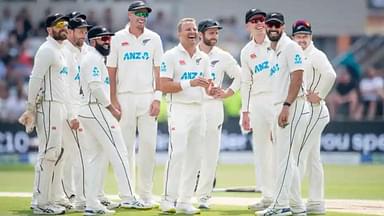Follow-on rule in Tests: If used correctly by the fielding captain, the follow-on rule in cricket has it in it to change the course of a match.
Advertisement
The follow-on rule in cricket is another of the many intriguing rules of the sport. If used correctly, the rule has it in it to change the course of a match.
First things first, this rule is only used in red-ball matches of two innings irrespective of it being a two-day, three-day, four-day or a five-day match. While the rule appears complicated to some fans, it is pretty simple to understand in reality.
The option of enforcing a follow-on always remain with the captain of the team which bats first. If the captain batting first decides not to enforce the follow-on, his team will bat again in the third innings of a Test match as per the norm.
Follow-on rule in Tests
MCC’s Law 14.1 (follow-on) states “In a two-innings match of 5 days or more, the side which bats first and leads by at least 200 runs shall have the option of requiring the other side to follow their innings”.
ALSO READ: How long are lunch and tea breaks in Test cricket?
Let us understand the follow-on rule with the help of an example from the ongoing first Test match between India and England in Chennai. After England captain Joe Root won the toss and elected to bat, England scored 578 in 190.1 in the first innings.
India, who got their chance to bat for the first time in the match on the third day, were reduced to 73/4 in the 27th over losing star batsmen such as Rohit Sharma (6), Virat Kohli (11) and Ajinkya Rahane (1).
How to calculate follow on runs in Test cricket?
It was at the same time that India faced a danger of not even reaching the target to save the follow-on. The simple method of calculating follow-on runs in a five-day Test match is subtracting 200 runs from the first-innings total.
In the aforementioned case, India will have to score one run more than 378 (578 – 200 = 378) runs to ensure that Root doesn’t enforce the follow-on. If India score 378 or less than 378, Root will have the option of asking them to bat again. The same, however, mostly depends on the time left in the match, condition of the pitch and whether the bowlers have it in themselves to bowl in two consecutive innings.
India 154/4 at tea. Still a long way from the follow-on threshold but with Pant and Pujara at the crease we’re in for a roller coaster ride. #IndvEng
— Rick Eyre on cricket (@rickeyrecricket) February 7, 2021
Had this been a four or a three-day match, 150 runs would have been subtracted from the first-innings total. In case of a two-day and a one-day match, 100 and 75 runs are deducted.
Runs subtracted from first-innings total to calculate follow-on
Five-day match – 200 runs
Four-day match – 150 runs
Three-day match – 150 runs
Two-day match – 100 runs
One-day match – 75 runs



